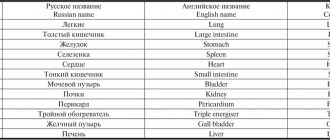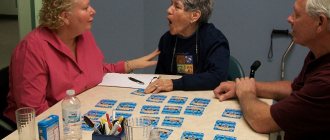Features of driving after an impact
Often after a stroke, the most devastating consequences are observed.
They may be as follows:
- mental disorders;
- paralysis of limbs;
- neuropathy;
- aphasia;
- visual impairment;
- lack of coordination of movements;
- disability.
After a stroke, the patient faces a long course of rehabilitation. If he wants to get behind the wheel again, he will have to undergo an examination, based on the results of which doctors will determine his ability to drive a vehicle.
The question of whether it is possible to return to driving a car cannot be given a definite answer. It all depends on the specific clinical case and the severity of the disease.
Reference! It is strictly forbidden to drive if you have epilepsy and numbness of the limbs.
When driving, normal vision is an important factor. Similar problems are recorded in 30% of post-stroke patients. Of course, over time, visual function is restored, but this happens if only a small part of the brain is affected. When its size is impressive, then the loss of this key function is possible.
The patient may be diagnosed with the following problems:
- lack of peripheral vision;
- loss of visual fields;
- optic nerve palsy;
- complete or partial absence of lateral vision.
Thus, only a doctor can determine whether a person will drive and what the consequences of driving are for the patient. Do not neglect the recommendations of your doctor to prevent relapse of this disease.
Is it possible to apply for disability after a stroke?
Doctors warn the patient about the possible consequences of driving. Stressful situations on the road can trigger another stroke. In addition, scientists have proven that after a hemorrhagic stroke, recovery is more difficult.
Rules for driving a car
In fact, a patient can get behind the wheel after suffering a mild stroke, but not earlier than three months later. In Canada and the UK the ban is one month; in the United States there is no clear limit at all. The driver will not be allowed to work unambiguously, and patients with symptoms of TIA (transient ischemic attack) should generally refrain from driving, since a stroke can occur at any time.
While an employee is on sick leave after a stroke, the employer does not have the right to terminate the employment relationship with him. Also, the employee has the right to receive temporary disability benefits by providing sick leave to the employer until the final closure of the sick leave.
You may be interested in:: How many large families are there in KhMAO for 2021
First of all, employers, personnel department employees and relatives of a person who has suffered a stroke, and during rehabilitation, the person himself, need to know what will happen to work after a stroke. In almost every case, a stroke is accompanied by hospitalization, which means the person is issued a sick leave certificate. While on sick leave, an employee cannot be fired. The duration of primary rehabilitation in case of stroke is on average 3-6 months.
What profession can you work in after a stroke - restrictions provided?
If an employee has been diagnosed with a disability, or if he cannot continue to work for medical reasons, even if he is not considered disabled, the employer must provide him with the opportunity to choose any other open vacancy that is suitable for the employee for medical reasons and for which he has the appropriate qualifications . Only if there are no such vacancies, or if the employee does not want to agree to new working conditions, he can be fired with severance pay.
Patients who return to riding usually report that it is a long and difficult process. At first, it is impossible to concentrate on anything other than the road, since switching attention to, for example, turn signals, takes the car in different directions. According to subjective feelings, after a stroke a driver has only 20-30% of his previous skills, most skills are reset to zero, and he has to learn everything all over again.
However, if a patient after a stroke is determined and confident that he is able to return to driving, then he will have to undergo a long and thorough medical examination, and then a rehabilitation course.
Stroke and driving
Unfortunately, based on the test results, only 10% of patients can get their driver's license back. This is due to the fact that usually people who have suffered a stroke make 2-3 times more mistakes on the road than healthy drivers. Patients return to driving more often after a microstroke, less often after a hemorrhagic stroke. The reason is the smaller affected area.
Medical restrictions for obtaining a driver's license in 2020 are regulated by Article 23 of the Federal Law “On Vehicle Safety”. The law refers to the List of such contraindications approved by the government six years ago. The list of diseases consists of both obvious contraindications to driving and vague formulations.
If you have epileptic disorders, it is prohibited to drive cars of any category, with any medical devices or design. Epilepsy is officially approved as a contraindication to driving and is on the corresponding list of diseases, because during a seizure while driving a person cannot control himself and is capable of causing an accident.
In the international classification of diseases for which driving is prohibited, organic, including symptomatic, mental disorders are designated by the code F00-F09. This category includes dementia (dementia), delirium, hallucinations, amnesia, including the consequences of Alzheimer's disease, as well as delirium of various etiologies, including after the manifestation of the consequences of alcohol, toxic and narcotic substances. Such diseases can also appear as a result of brain injuries and strokes.
A stroke can also be fatal. Many patients who have suffered a mini-stroke have a question about whether it is possible to drive a car while undergoing a rehabilitation course. The ability to drive is determined by a special commission based on the results of examination, testing and medical indicators. The decision is made 3-6 months after the attack.
When can you drive?
A post-stroke patient can drive a car after full recovery .
This period is different for each person.
Everything is agreed upon with the attending physician.
The length of the wait depends primarily on the severity of the stroke and the rate of improvement in your general health.
You can drive again only after completing tests on a stimulant and passing a medical commission.
To determine whether a person still has driving skills, it is necessary to pass a specially designed test. It is performed directly in the car in the presence of an instructor or using a computer stimulator. This type of research has disadvantages:
- high price;
- duration of all tasks (about 45 minutes).
Important! Before starting tests, it is necessary to fully restore all lost abilities. Only then will the commission issue permission to return the driver's license.
Testing objectives:
- checking existing knowledge of traffic rules. The instructor, located next to the driver, will determine how adequately he pays attention to the signs and recognizes them. This is how the restoration of visual perception is tested;
- identification of spatial orientation. Here attention will be paid to the correct execution of specific actions and coordination of movements;
- Determining the possibility of making your own route without any help. Here it is important to assess the nature of the post-stroke patient’s thinking, his logic of thoughts and judgments.
A test is a set of specific actions and tasks. Its author is a Belgian scientist who previously studied over 1.5 thousand case histories of post-stroke patients.
People who return to riding after a stroke usually report that the process is difficult and time-consuming. At first it’s almost impossible to get ready, it’s difficult to switch attention. Subjective sensations indicate that the driver has only a third of his previous skills, so he has to learn everything all over again.
First, experts advise driving on less busy roads where there is no active traffic. It is advisable that the speeds be low; you cannot be distracted by conversations. The steering wheel must be held exclusively with both hands.
Return to driving: is it possible?
Unfortunately, such verification is not mandatory. Therefore, the patient often decides independently when he can drive. However, this approach is wrong. The patient himself may inadequately assess his condition and deny obvious problems. It is primarily in his interests to undergo a medical examination. If the decision of the medical commission seems biased, it is wise to seek advice from an independent expert.
How is a person's ability to drive a car assessed?
- mental disorders: delirium, mood swings, neuroses, personality disorders, mental retardation, hallucinations;
- post-stroke epilepsy;
- double-sided blindness;
- double vision as a result of strabismus;
- trembling of the pupil (nystagmus);
- limitation of the field of view by more than 20 0;
- deformation of both hands;
- chronic dizziness.
Blood tests as part of a diagnostic examination for stroke help determine the presence of atherosclerosis and increased blood clotting. These conditions must be combated in order to prevent a repeat catastrophe in the blood vessels of the brain. A general blood test helps to identify inflammatory processes in the body and changes in the number of platelets.
You may be interested in:: Mat cap 25 thousand
Stroke is a dangerous condition that can lead to death and disability. The prognosis directly depends on how quickly the patient was examined by the doctor and treatment was started. Therefore, it is important to be able to recognize the first signs of this condition, and if they occur, you should immediately call a doctor.
What are the first signs and symptoms of a stroke to look out for?
- Every year, approximately 800,000 people have a first or repeat stroke.
- Every 40 seconds, someone in the world experiences this condition.
- Every 4 minutes, one person dies from a stroke.
If, after a stroke, mild motor and speech disturbances persist that do not affect functions important for driving, the issue of admission to driving is decided individually no earlier than a year after a full clinical examination (re-examination - annually).
As explained to AiF in the 24th city polyclinic for special medical examinations in Minsk, after a myocardial infarction, the issue of admission to driving transport is resolved no earlier than 6 months after compensation has been achieved, there are no general contraindications and on the basis of the conclusion of a cardiologist (re-examination – annually).
You may also be interested
After a stroke (cerebral infarction), the issue of admission to driving a vehicle is decided individually in the absence of motor, coordination, speech and other disorders after dynamic medical observation for 6 months and a full clinical examination (re-examination - annually).
First: noise in the head, tinnitus. Second: some flickers and spots before the eyes. Third: numbness of the limbs, numbness of the corner of the mouth, numbness of the tongue. Speech impairment. The slightest memory impairment. These are symptoms that tell you that you need to run to the doctor.
World Stroke Day is celebrated on October 29th . On the eve of this day, FAN talked with a neurologist, Doctor of Medical Sciences Viktor Shakhnovich , who heads the group of innovative neurology of the REC BIOMED Moscow State University. M. V. Lomonosova (Research and Educational Center for Applied Medicine and Food Safety of Moscow State University named after M. V. Lomonosov). Viktor Alexandrovich named the first signs of an impending stroke and gave advice on preventing this dangerous disease.
Cardiovascular disease is getting younger
Why is this happening? Overload, stress, heavy workload, lack of an active lifestyle. But when we talk about an active lifestyle, we think, go to the gym for a couple of hours, and that’s enough, we, they say, are doing the right thing.
- The trial involved 10 patients who had suffered a mild stroke and 10 healthy people with extensive driving experience, all of the same age.
- Testing was carried out on a specially designed simulator - in a city without traffic, using turns, as well as driving on a highway.
- Stroke patients made twice as many errors, especially when turning, crossing intersections, and following distances.
In cases where a stroke is defined as a micro-stroke, a small part of the patient’s brain is affected, the chances of successful treatment and recovery are quite high. Violation of body functions is minimal. After completing a rehabilitation course and the conclusion of a special commission, you can drive a car. But this is allowed only after testing. It is absolutely contraindicated to drive a car or work as a driver after paralysis, in case of muscle spasms or epilepsy.
Consequences of cerebral hemorrhage
Doctors warn the patient about the possible consequences of driving. Stressful situations on the road can trigger another stroke. In addition, scientists have proven that after a hemorrhagic stroke, recovery is more difficult.
People who return to riding after a stroke usually report that the process is difficult and time-consuming. At first it’s almost impossible to get ready, it’s difficult to switch attention. Subjective sensations indicate that the driver has only a third of his previous skills, so he has to learn everything all over again.
The conclusions of the medical commission depend on the general health of the patient, the type of neurological disease and the degree of damage. In any case, it must be remembered that a relapse can occur at any time. Older people are at risk.
You may be interested in:: How Many Times a Day Can Collectors Call According to the Law in 2021
Is it allowed to work as a driver?
- difficulty in assessing the situation on the road;
- lack of clarity of thinking;
- difficulties with timely braking;
- complications of actions and poor reactions;
- narrowed visual field.
In order to know whether you can drive a car after a stroke, you need to test your vision and the speed of recognizing road signs, the second test is required to determine your reaction speed, and the third test determines how much the driver is able to follow moving objects on the road.
Problems that the patient may encounter
If the rehabilitation course is successful, the patient may not always be able to drive a car again.
This is hindered by the following problems:
- difficulty in assessing the situation on the road;
- lack of clarity of thinking;
- difficulties with timely braking;
- complications of actions and poor reactions;
- narrowed visual field.
Relevant factors negatively affect human behavior while driving. Such a driver poses a risk to other motorists. He himself may get injured.
Important! Categorical indicators for resumption of driving are cognitive impairment and poor visual abilities.
Statistical information suggests that after a stroke, cognitive impairments make themselves known in 70% of cases. We are talking about deterioration:
- attention;
- memory;
- orientation.
It is these violations that cause concern among specialists, so they cannot issue a permit to drive a vehicle.
Is it allowed to work as a driver?
A decision on this issue is made by a special commission after a detailed examination and receipt of the results of all tests.
In general, of course, experts recommend changing your profession, because the person behind the wheel is responsible for the lives of passengers.
In addition, recovery from a hemorrhagic type of disease is more difficult.
In fact, you can drive a car in no less than three months. In other countries of the world, the recovery period does not exceed 30 days. It is the doctor who must inform the patient about the dangers of working as a driver after this neurological disease, because it is accompanied by:
- increased blood pressure;
- panic;
- frequent stress.
All these factors are precursors of cerebral hemorrhage. Emergency situations on the roads cannot be ruled out. If, in addition, the driver speaks inarticulately, then conflicts with law enforcement officers may occur.
The conclusions of the medical commission depend on the general health of the patient, the type of neurological disease and the degree of damage. In any case, it must be remembered that a relapse can occur at any time. Older people are at risk.








